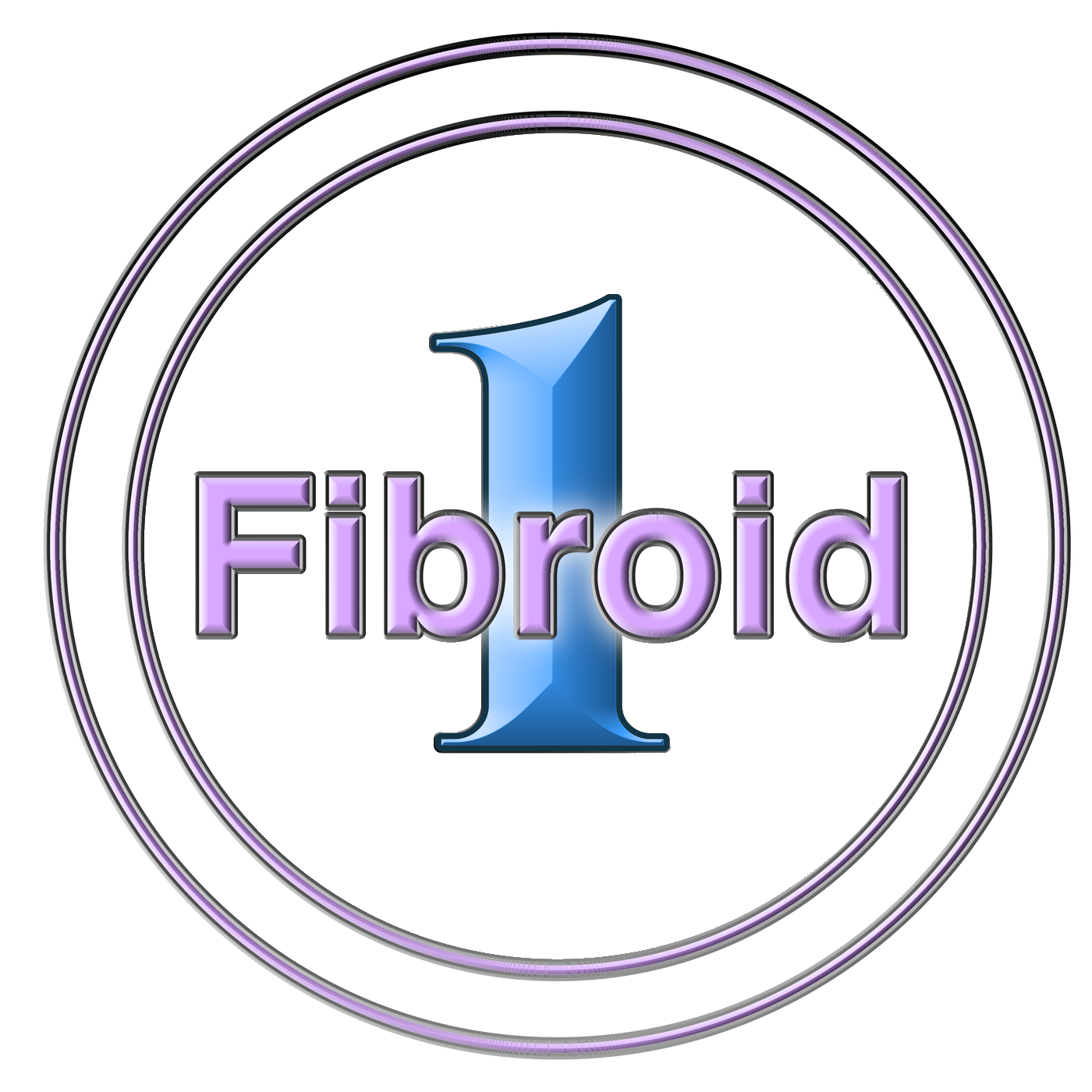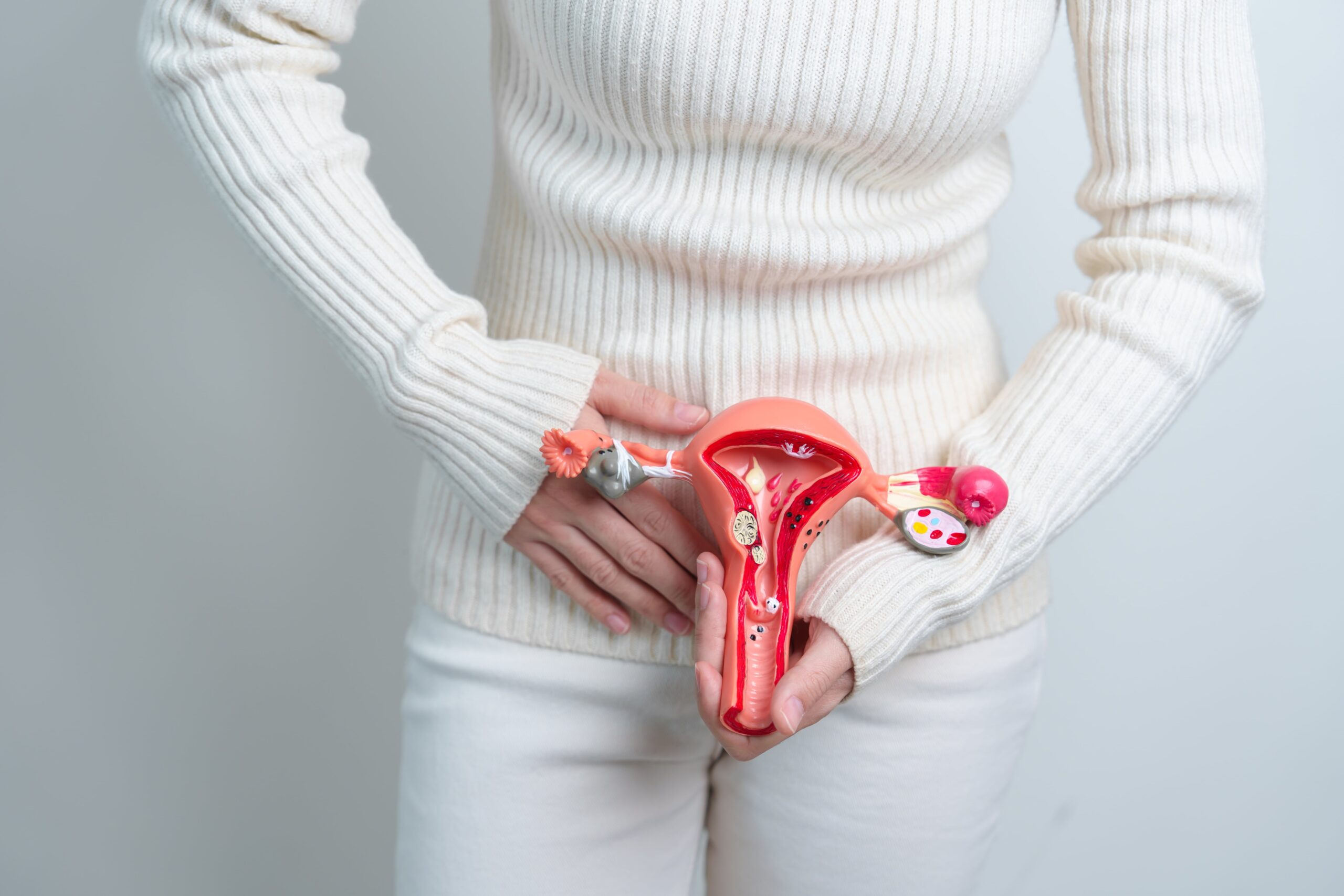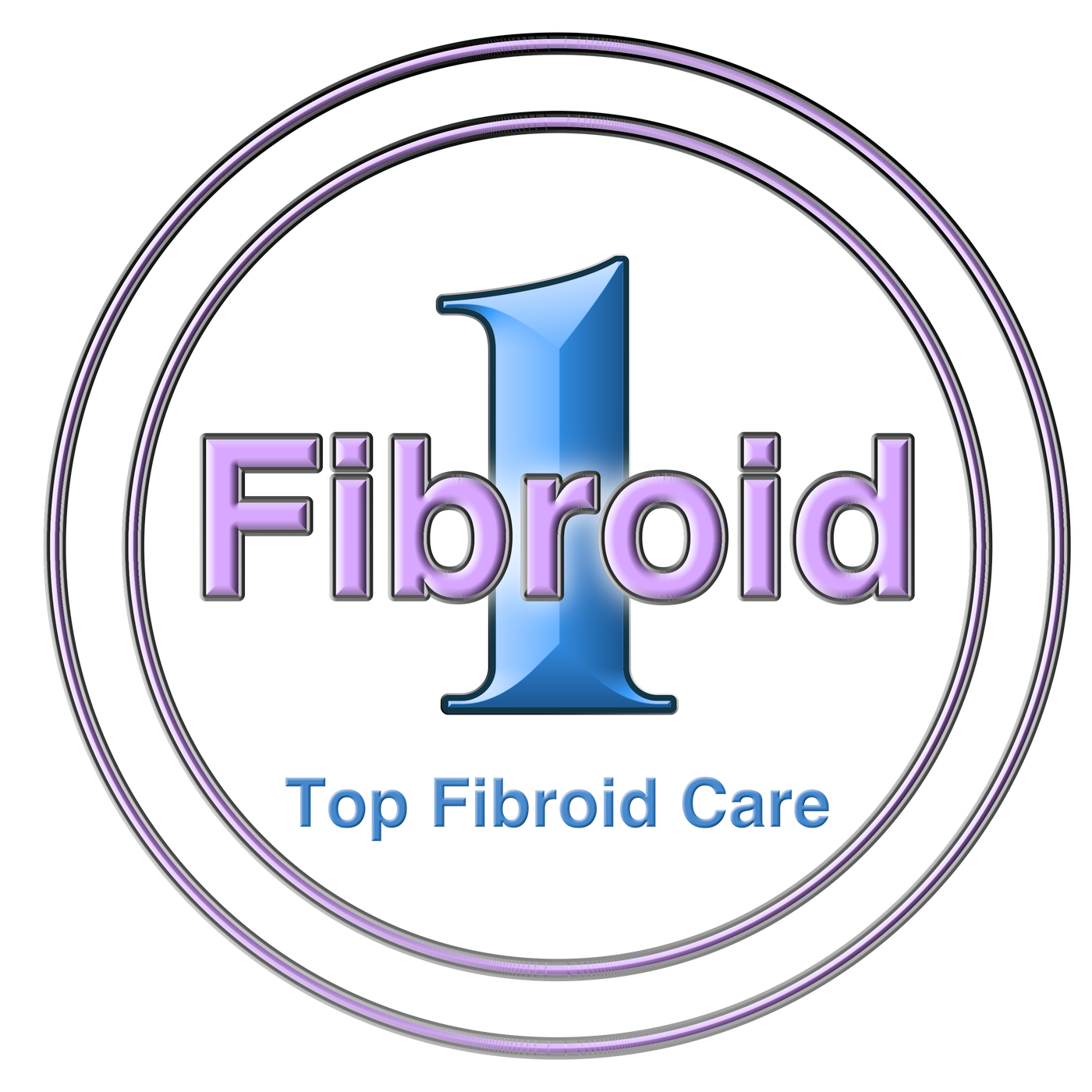How Different Types of Fibroids Cause Different Symptoms
Most women with fibroids don’t experience any symptoms, but for those who do, the type of fibroid can play a role in the severity and nature of the symptoms. In this blog, we will take a closer look at the different types of uterine fibroids, as well as the particular set of symptoms that certain types of fibroids can cause.
Fibroids are growths that can occur in the uterus and cause a variety of symptoms depending on their size, location, and type.
Fibroids, also known as uterine leiomyomas, are noncancerous growths that can appear in the uterus. They are quite common, with up to 80% of women experiencing them at some point in their lives. They occur more often in women in their 30s and 40s and are particularly common among African American women. While many women with fibroids don’t experience any symptoms, others can experience a range of symptoms depending on the type of fibroid they have. There are three main types of fibroids: subserosal, intramural, and submucosal. There are also pedunculated fibroids and fibroid degeneration that can cause symptoms.
Subserosal Fibroids
Subserosal fibroids are the most common type of fibroid. These fibroids grow on the outer surface of the uterus and can cause pain or discomfort in the lower abdomen or back. These fibroids grow from the muscular wall of the uterus and, in some cases, can extend beyond the walls into neighboring organs such as the bladder and rectum. As a result, they often cause abdominal bloating or heaviness, bladder issues, and constipation. While the exact cause of these symptoms is not clear, it may be due to the pressure that the fibroids put on nearby organs.
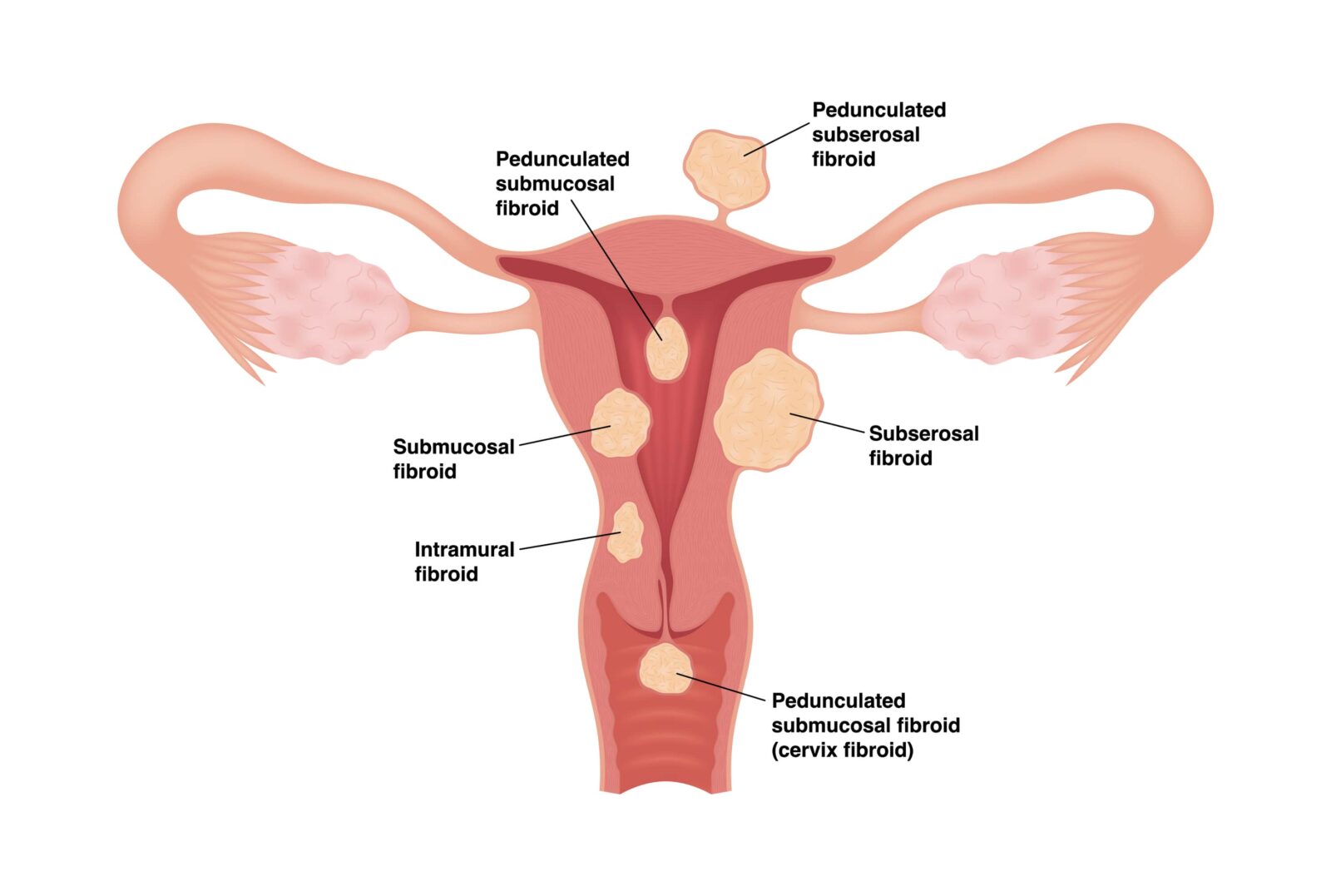
Intramural Fibroids
Intramural fibroids are another common type of fibroid. They develop within the uterine wall, underneath the endometrium. There are three subtypes of intramural fibroids:
- anterior intramural fibroid grows at the front of the uterus
- posterior intramural fibroid grows at the back of the uterus
- fundal intramural fibroid grows on the top wall of the uterus
Women with intramural fibroids often experience symptoms that affect the function of the uterus and surrounding organs. Symptoms of an intramural fibroid can be similar to either those of a subserosal or submucosal fibroid and include back pain, heavy periods, and frequent urination. However, the exact symptoms depend on the location of the fibroid.
Submucosal Fibroids
Submucosal fibroids are the rarest type of fibroids. These fibroids can be problematic since they grow just under the inner lining of the uterus. They are the most likely to cause heavy bleeding during menstruation. They can also cause infertility due to the fact that submucosal fibroids can distort the shape of the uterine cavity and other reproductive organs, making it difficult for a fertilized egg to implant. Pedunculated submucosal fibroids can also increase the risk of miscarriage or birth defects since they extend into the open space of the uterus.
Other Causes of Symptoms
Pedunculated Fibroids
Pedunculated fibroids are attached to the uterus by a stalk or stem. They can be submucosal or subserosal. Because they are attached to the uterus by a stalk, pedunculated fibroids can sometimes twist, causing severe pain due to a loss of blood supply. Pedunculated submucosal fibroids can also increase the risk of miscarriage or birth defects since they extend into the open space of the uterus.
Red Degeneration
Red degeneration is a rare complication that can occur in fibroids most often during pregnancy. It happens when the fibroid outgrows its blood supply and begins to die off. This can cause severe abdominal pain, fever, and nausea. While red degeneration is rare, it is important to seek medical attention if you experience any of these symptoms.
Treatment for fibroids depends on their size, location, type, and symptoms but may include medication, surgery, or lifestyle changes such as diet and exercise.
Treatment for fibroids can involve specific techniques depending on the individual’s case. Factors such as the size of the fibroids, their location in the body, type of fibroid, and any accompanying symptoms are taken into account when determining a treatment plan.
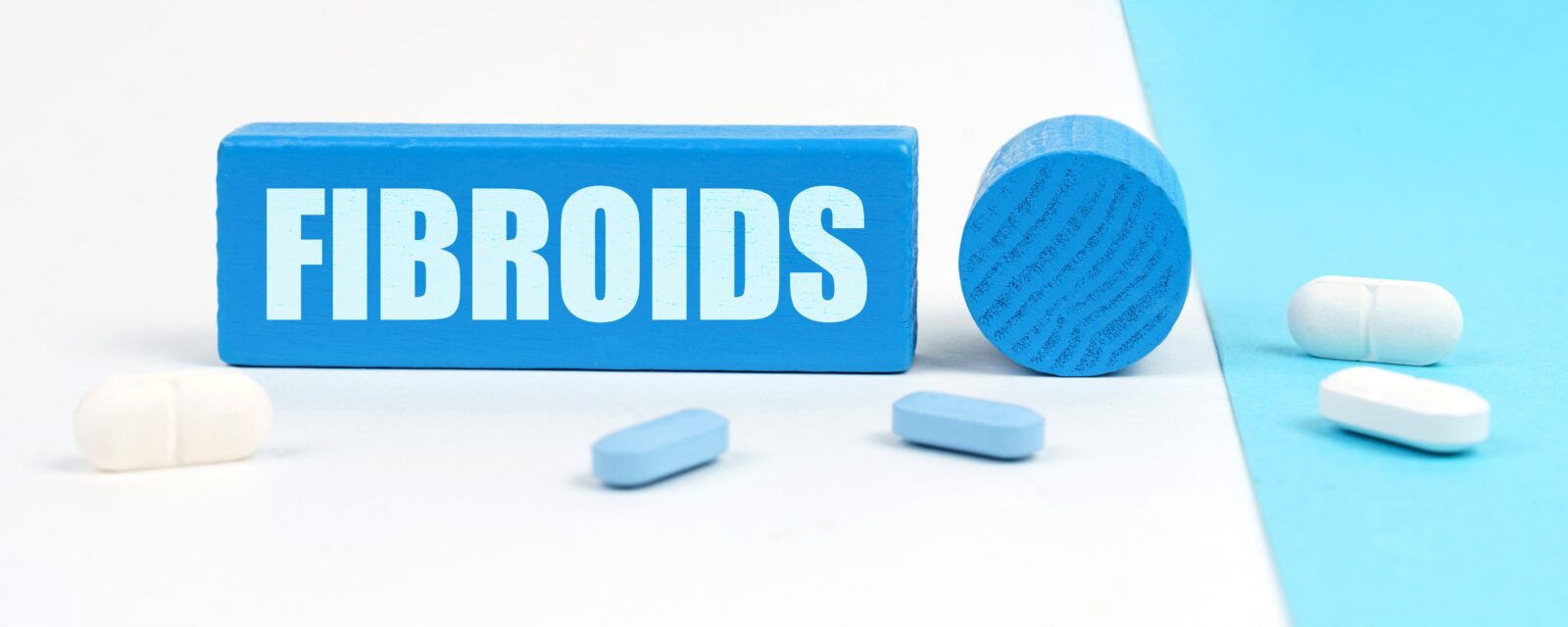
Common treatments may include medication to reduce the size of the fibroids and relieve symptoms. There are several types of medication that can be used to treat fibroids, including: Gonadotropin-releasing hormone (GnRH) agonists, which can shrink the fibroids; Progestin-releasing intrauterine device (IUD), which can help reduce heavy menstrual bleeding associated with fibroids; or Nonsteroidal anti-inflammatory drugs (NSAIDs) to help relieve pelvic pain associated with fibroids.
Uterine fibroid embolization is another treatment option for fibroids. During UFE, a small catheter is inserted into the arteries that supply blood to the fibroids. Tiny particles are then injected into the catheter to block the blood supply to the fibroids. This causes the fibroids to shrink over time. UFE is a minimally invasive procedure that can be done on an outpatient basis. The recovery time is typically shorter than for surgery, and the risk of complications is lower.
Finally, surgery may be necessary if medication and UFE are not effective in treating fibroids. The type of surgery recommended will depend on the size and location of the fibroids, as well as the woman’s overall health. The two most common types of surgery for fibroids are: Myomectomy and Hysterectomy.
Additionally, lifestyle changes such as diet and exercise can help manage symptoms associated with fibroids. With a range of options available, women in experienced hands can be confident they’ll receive suitable advice and support to meet their needs when it comes to treating fibroids.
In Conclusion
Fibroids are growths that can occur in the uterus and cause a variety of symptoms depending on their size, location, and type. There are three main types of fibroids: submucosal, intramural, and subserosal. Submucosal fibroids grow just under the inner lining of the uterus and can cause heavy bleeding during menstruation. Intramural fibroids grow within the wall of the uterus and can cause pain or pressure in the pelvic area as well as difficulty urinating or having a bowel movement. Subserosal fibroids grow on the outer surface of the uterus and can cause bloating or discomfort in the lower abdomen or back. Treatment for fibroids depends on their size, location, type, and symptoms but may include medication, UFE, surgery, or lifestyle changes.
